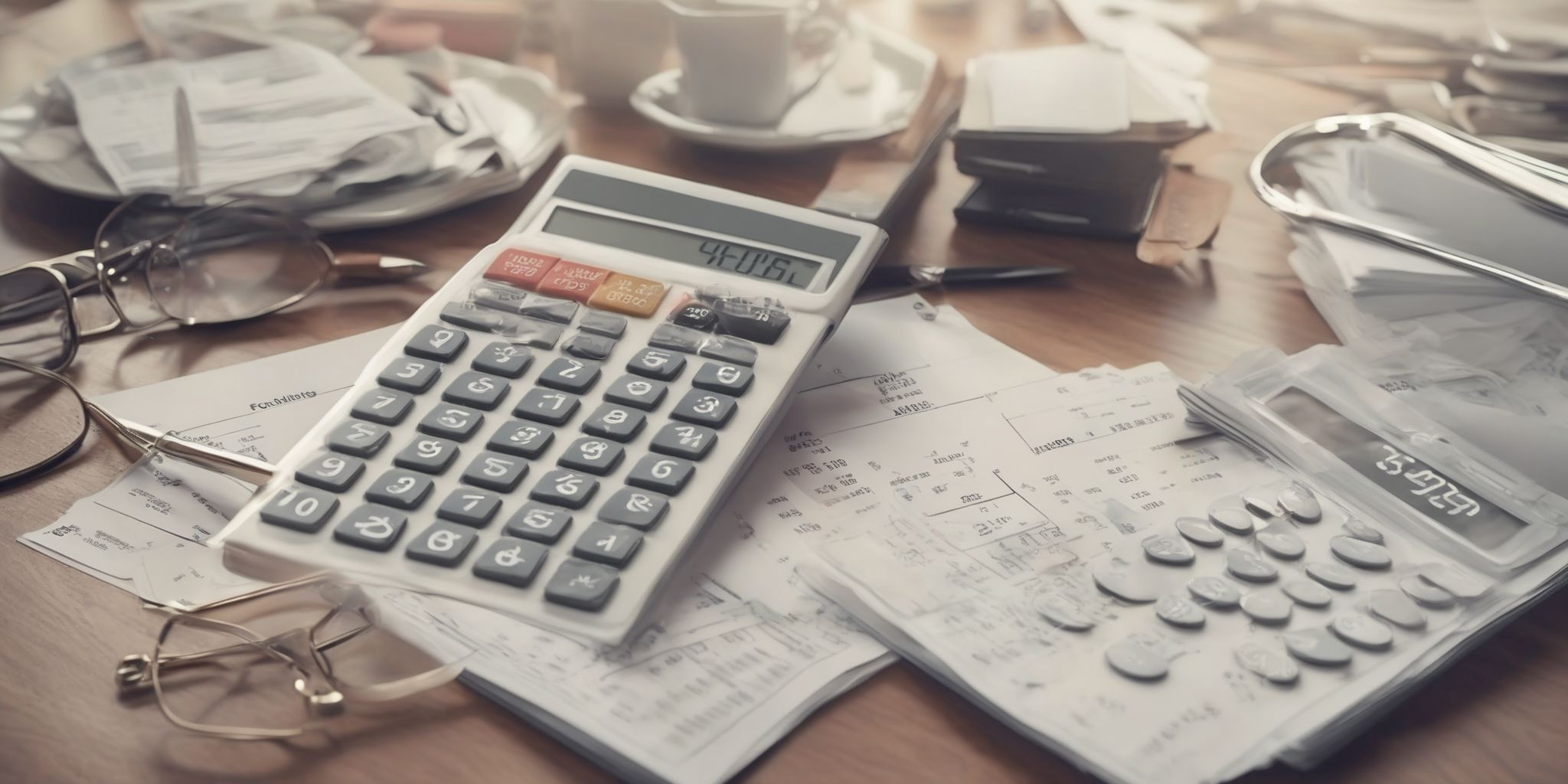How Cash Advances on Credit Cards Work: Explained
Hey there! So, have you ever found yourself in a situation where you needed some quick cash, but you weren't sure how to get it? Well, let me introduce you to the world of cash advances on credit cards. Yep, that little piece of plastic tucked in your wallet can actually be your financial savior in times of need. But wait, how does it work? Don't worry, in this article, we'll unravel the mystery behind cash advances and tell you everything you need to know about them.
No complex finance jargon,just plain, simple human explanations. Ready? Let's dive right in!
What are Cash Advances on Credit Cards?
Understanding Cash Advances
A cash advance on a credit card allows cardholders to withdraw cash from their available credit line. Unlike regular purchases, cash advances often incur high interest rates and fees right from the start. It's important to remember that interest starts accruing immediately, without any grace period.
Additionally, the cash advance limit may be lower than the overall credit limit. It's crucial to carefully read the terms and conditions of the credit card agreement to understand the specific details regarding cash advances. By fully comprehending the implications and costs associated with cash advances, cardholders can make informed decisions about when and how to use this feature wisely.
How do Cash Advances Credit Card work?
Cash advances on credit cards allow cardholders to withdraw cash from ATMs or obtain cash equivalent funds. These transactions are typically subject to higher interest rates and fees compared to regular credit card purchases. The amount available for cash advances is usually limited to a percentage of the credit card's credit limit or cash advance limit. Interest begins accruing immediately upon withdrawal, and there is often no grace period for repayment.
Cash advances on credit cards can be useful in emergency situations where cash is required, but it is important to consider the associated costs and explore alternatives before proceeding.
Cash Advances Credit Card Interest Rates
Explaining Interest Rates on Cash Advances
Interest rates on cash advances credit card tend to be higher than regular credit card purchases. This is because cash advances are considered riskier for lenders. The interest rates can range from around 20% to 30% or even higher. For example, if you withdraw $500 as a cash advance with an interest rate of 25%, you could end up owing $625 after one year.
It's important to understand that interest on cash advances starts accruing immediately, without a grace period like regular purchases. This means that even if you pay off your credit card balance in full by the due date, you may still be charged interest on the cash advance.
To minimize interest charges, it's advisable to repay cash advances as soon as possible. If you're unable to pay it off entirely, at least try to make more than the minimum payment to reduce the interest amount.
Comparing Interest Rates with Regular Credit Card Purchases
When comparing interest rates on cash advances with regular credit card purchases, it's important to note that cash advances generally come with higher interest rates. Here are some practical insights to consider:
- Cash advances usually have a higher APR (Annual Percentage Rate) than regular purchases.
- The interest on cash advances may start accruing immediately, without a grace period.
- Regular credit card purchases often offer promotional APRs, while cash advances rarely have such perks.
- Prolonged repayment of a cash advance can result in a significant amount of interest being paid.
To minimize interest costs, it's advisable to repay cash advances as soon as possible and consider alternative financing options with lower interest rates, such as personal loans.
Cash Advances Credit Card Fees
Upfront Cash Advance Fees
Upfront cash advance fees are charges that credit card issuers impose when you withdraw cash from your credit card limit. These fees are typically calculated as a percentage of the total cash advance amount or a flat fee, whichever is higher. While the specific fee structure varies among credit card providers, it is common to see upfront fees ranging from 3% to 5% of the cash advance amount.
For example, if you withdraw $500 as a cash advance, you may be charged a fee of $15 to $25. It's important to consider these fees when deciding whether a cash advance is the most cost-effective option for your financial needs.
Additional Fees and Penalties
- In addition to the upfront cash advance fees, be aware of any additional fees or penalties that may apply when taking a cash advance on your credit card.
- Late payment fees: If you fail to repay the cash advance on time, you may incur late payment fees, which can add up quickly.
- Higher interest rates: Cash advances often come with higher interest rates compared to regular credit card purchases. This means you'll end up paying more in interest if you don't repay the cash advance promptly.
- Grace period: Unlike regular credit card purchases that may have a grace period before interest starts accruing, cash advances generally start accruing interest immediately.
- Penalty APR: Some credit card issuers impose a penalty APR if you consistently make late payments or exceed your credit limit. This can significantly increase the interest rate on both cash advances and regular purchases.
- Always read your credit card agreement and understand all the potential fees and penalties associated with cash advances before deciding to take one.
How to Get a Cash Advance on Credit Card
Methods of Obtaining Cash Advances
Methods of Obtaining Cash Advances (Cash Advances Credit Card):
- ATM Withdrawal: One common method is to use your credit card at an ATM to withdraw cash. Keep in mind that this may come with additional fees and higher interest rates compared to regular credit card transactions.
- Over-the-Counter: Some credit card issuers allow you to obtain cash advances by visiting a bank or financial institution. This usually involves presenting your credit card and a form of identification.
- Online or Phone Request: In some cases, you can request a cash advance online or over the phone through your credit card issuer. This method offers convenience but may still incur fees and higher interest rates.
Remember, cash advances should be used sparingly due to the associated costs. Explore alternatives such as personal loans or other financing options for better terms and lower fees.
Limits on Cash Advances
- Credit card issuers typically set a maximum limit on the amount of cash advances you can take from your credit card.
- The limit may be a percentage of your total credit limit or a specific dollar amount.
- For example, if your credit limit is $5,000 and the cash advance limit is 30%, you can only withdraw up to $1,500 in cash advances.
- It's important to be aware of these limits to avoid exceeding them and facing potential penalties or fees.
- Check your credit card terms and conditions or contact your credit card issuer to determine your specific cash advance limit.
Alternatives to Cash Advances on Credit Cards
Using Personal Loans
Using personal loans can be an alternative to cash advances on credit cards. Personal loans usually offer lower interest rates compared to credit card cash advances. They are often available from banks, online lenders, or credit unions. By taking out a personal loan, you can access a lump sum of money that you repay in fixed installments over a set period. This can be particularly helpful if you need a larger amount of cash for an emergency or unexpected expense.
However, it's important to carefully consider the terms and interest rates of the personal loan to ensure it is a cost-effective solution for your financial needs.
Exploring Other Financing Options
- Personal Loans: Consider applying for a personal loan instead of relying solely on cash advances from your credit card. Personal loans often have lower interest rates and more favorable terms, making them a more cost-effective option for borrowing money.
- Line of Credit: If available, a line of credit can offer flexibility and potentially lower interest rates compared to cash advances. It allows you to borrow money on an as-needed basis, similar to a credit card, but with potentially more favorable terms.
- Peer-to-Peer Lending: Explore peer-to-peer lending platforms that connect borrowers with individual investors. These platforms often offer competitive interest rates and can provide financing without the need for a credit card.
- Borrowing from Friends or Family: While it's important to approach this option with caution, borrowing from trusted friends or family members may offer a solution without incurring interest charges or fees. Always ensure clear repayment terms and open communication to avoid potential strain on relationships.
Remember, thoroughly research and compare different financing options before making a decision to ensure you choose the most suitable and affordable option for your needs.
Key Considerations and Tips for Cash Advances Credit Card
Evaluating the Need for a Cash Advance
When considering a cash advance on your credit card, it's important to carefully evaluate the need for it. Start by assessing the urgency of the situation and whether there are alternative options available. If the expense is necessary and immediate, such as a medical emergency or unexpected car repair, a cash advance might be justifiable.
However, for non-essential purchases or expenses that can be planned ahead, it's generally more prudent to explore other financing alternatives, like personal loans or budgeting for the expense over time. Taking the time to evaluate the necessity and exploring alternatives can help you make a more informed decision and avoid unnecessary interest and fees.
Minimizing Interest and Fees
To minimize the interest and fees associated with cash advances on your credit card, consider the following tips:
- Pay off the balance promptly: Cash advances often start accruing interest immediately, so paying off the balance as soon as possible can reduce interest charges.
- Limit cash advances to emergencies: Using cash advances for non-essential purchases can lead to unnecessary fees. Only opt for them when it's truly necessary.
- Understand your card's terms: Familiarize yourself with the interest rates, fees, and repayment terms specific to your credit card. This knowledge will help you make informed decisions on when and how to use cash advances.
- Explore alternative options: Before resorting to a cash advance, consider other financing options such as personal loans or borrowing from friends or family.
These alternatives may offer lower interest rates and fees.
By following these strategies, you can minimize the financial impact of cash advances on your credit card.
Repaying Cash Advances Promptly
Repaying cash advances promptly is crucial to avoid accruing high interest charges. When you take out a cash advance on your credit card, interest starts accumulating immediately, usually at a higher rate than regular purchases. Paying off the cash advance as quickly as possible minimizes the interest you'll have to pay. Consider creating a repayment plan and budgeting to prioritize paying off the advance.
For example, you could allocate a portion of your income specifically towards paying down your cash advance balance each month. By repaying promptly, you can save money and prevent the cash advance from becoming a long-term financial burden.
Over to you
Cash advances on credit cards allow cardholders to withdraw cash from an ATM or a bank, using their credit limit rather than a checking account. This convenience comes with a price, as cash advances typically have higher interest rates and additional fees compared to regular credit card purchases. While it may seem convenient in an emergency, it's essential to understand the costs and implications before considering a cash advance.
Be sure to read the fine print and consider alternatives beforeopting for this option.


